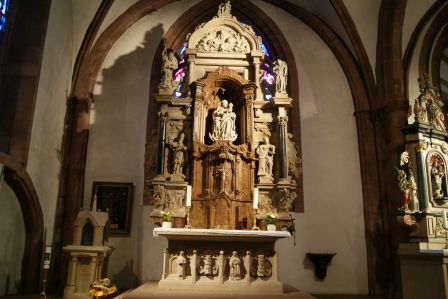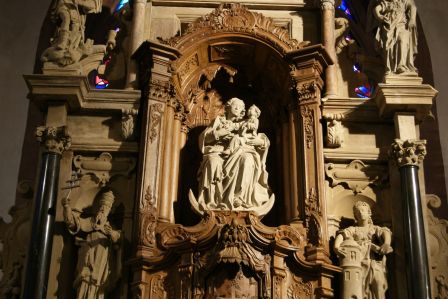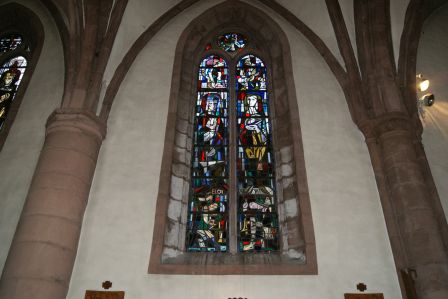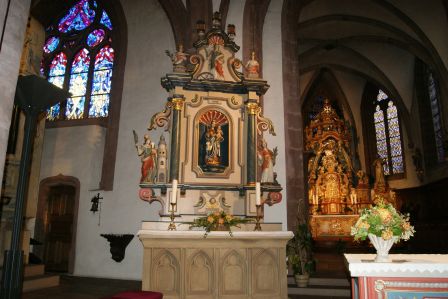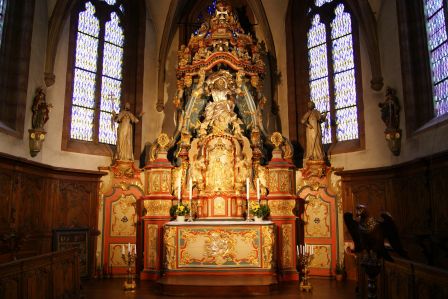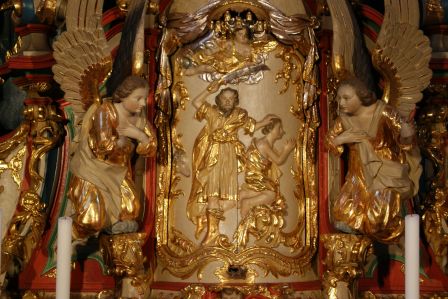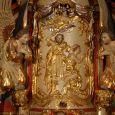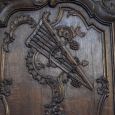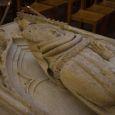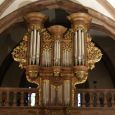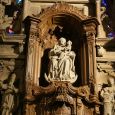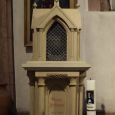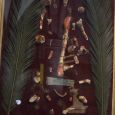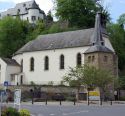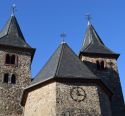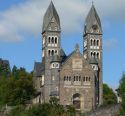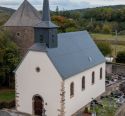Church | XIII | Romanesque, Gothic | Catholic Church

Map
Opening hours
01 January - 31 December
Mon 9.00 - 19.00
Tue 9.00 - 19.00
Wed 9.00 - 19.00
Thu 9.00 - 19.00
Fri 9.00 - 19.00
Sat 9.00 - 19.00
Sun 9.00 - 19.00
16 October - 14 March
Mon 10.00 - 16.00
Tue 10.00 - 16.00
Wed 10.00 - 16.00
Thu 10.00 - 16.00
Fri 10.00 - 16.00
Sat 10.00 - 16.00
Sun 10.00 - 16.00
Description
Photos
Remarkable elements
The Rococo Style Main Altar
The altar, in the Trinitarian colours of red, white, and blue, dates from 1758 and was created by the sculptor Michael Weiler. It is a typical example of the religious sculpture of the late baroque. This unique glorification of the Holy Trinity masterfully combines medieval symbolism and typology with the lightness and playfulness of Rococo.
The sacrifice of Isaac, a scene from the Old Testament, is represented on the monstrance tabernacle flanked by adoring angels, and makes reference to the total dedication of Jesus Christ on the Cross, embodied in the Eucharist. On the antependium, Mary is represented in an expressive way as Our Lady of Sorrows. The link with the Trinitarian Order is illustrated by two monumental statues of the founders of the Order, Saint John of Matha and Saint Felix of Valois.
The Choir Stalls
Everything that makes these stalls from 1769 an original work of sculpture is concentrated in the upper back panels. In the middle of scrolls of leaves and florets, the artist has placed arrangements of sculpted musical instruments. We find there the three main families of instruments: wind instruments, strings, and percussion.
The Burial Slab
The tombstone of Countess Marie of Spanheim (1337-1400), daughter of the Count of Vianden, is an outstanding sculptural example of the early 15th-century “style doux” (“soft style”).
The Organ
The historic Trinitarian organ (1693) is one of the oldest organs in Luxembourg, with a casing designed in the style of instruments that we find in the north of France in the same era. Thanks to meticulous reconstruction in the old style, the church now has an authentic instrument, whose palette of sounds is in perfect harmony with the richly decorated organ case. Unusually, the organ is placed on the pillar in the middle of the south nave and not in the middle of the gallery.
The Altar of the Holy Sacrament
Designed in the early baroque style at the beginning of the 17th century, the imposing altar of the Holy Sacrament was produced by the famous sculpture workshop of Hans Ruprecht Hoffmann of Trier. It would seem that this one stone altar was the main altar of the church until 1758. Since 1953, it has been in the chancel of the north nave. A Trinitarian sarcophagus serves as a base plate. In 1749, the stone altar piece was covered with rococo woodwork with a double rotating tabernacle, in which the ciborium with the consecrated hosts is stored.
The Stone Reliquary
In 1974, the skull of the Blessed Yolande (1231-1283), daughter of Count Henry I of Vianden, abbess of Marienthal, was brought back from the Marienthal convent to Vianden. Since 1996, the skull has been displayed in a stone reliquary.



